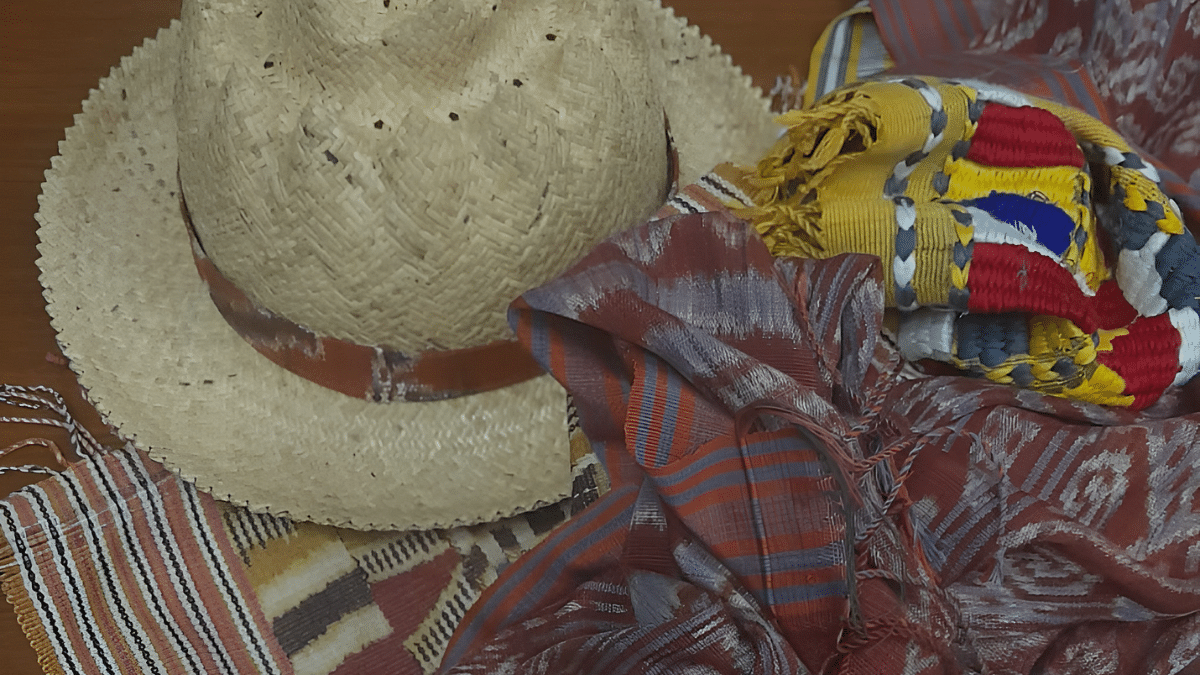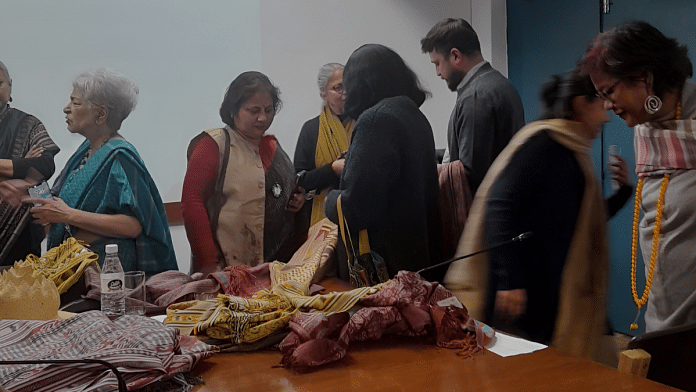New Delhi: Apple may have mainstreamed ‘i’ with a slew of sleek products from the iPod to the iPhone. But for architect, artist, and fashion designer Edric Ong, the ‘i’ in design is the interplay of perspective—the eye—with perception (the self). It’s also about the relationship between the artist and the consumer.
In his lecture titled ‘The I of Design’ at Delhi’s India International Centre on 16 February 2024, the designer from Sarawak in Malaysia’s Borneo expanded on his interpretation of art and design.
Art is innovative, imaginative, iconic, interactive, intelligent, interpretative, and ‘intersectory’. Having designed landmarks such as Sarawak Cultural Village and Kuching International Airport, Ong is now working toward preserving the cultural heritage of Sarawak.
To do this, he draws from the traditions and art of indigenous communities and transforms them into items of utility as well. The rattan hat that he had on during the event was a play on ‘topi tunjang’, a traditional Iban warrior’s hat. He used the design of the topi, added a brim, and used natural dyes so that it could be worn as a summer hat. Sometimes he adds feathers and specific design features like a criss-cross.
He designed a hat for the annual Santa Fe International Folk Art Market where it was well received.
Now, the practice is part of his sartorial expression—Ong has fashioned himself as an ambassador for old traditions.
“The artistic works of indigenous communities are pivotal in whatever I am doing. It is only through the promotion of their works that I can make their creativity known to the public—local, national, regional, and international. And also how important a role that arts and crafts play in their culture,” he said.
Making endemic art ‘cosmopolitan’
For the most part, Ong works with textiles. His set of scarves, which were displayed in the room, were the centre of attention. All the attendees rushed to the front to take a look and even buy some.
In the realm of textiles, the impact of international trade policies is significant. Recent discussions have highlighted how regulations can affect local artisans and their ability to thrive in a competitive market.

“Endric was in India for a little while, so I thought this is a great opportunity to share his knowledge with my friends here at the Delhi Crafts Council,” said Manjari Nirula who chaired the session.
Most of the guests had read his books on the textiles of Borneo’s Iban community that weaves pua kumbu, a textile made from a combination of ikat dyeing and backstrap loom weaving. They use the fibres and dyes that are endemic to the jungles of Borneo. Edric, who has also worked with UNESCO and is considered to be an expert in the field.
In 2022, he debuted the ‘Malaysian Dress’ and put it on the map with European fashion shows. At the London Fashion Week in September 2023, his designs of eco-fashion and slow fashion were covered by top European media.
A well-known name
Today, Iban textile art is a popular design element in bento boxes in Japan, storage baskets in Australia, and rattan work in other parts of the world. With an experience of over three decades as the guardian and ambassador for Sasrawak’s handicrafts and traditions, Ong is well known in Delhi, especially among art and textile students.
“I am a conservator by profession and have recently dabbled a bit in textiles. When I came to know of this event, it was the place to be,” said an audience member.
Some of the attendees even had an exclusive tea-drinking session with Ong.
“I wish you were my teacher at school,” said a woman in the audience, jotting down notes as Ong explained the fundamentals of design and their underlying cultural themes.
(Edited by Humra Laeeq)






